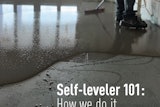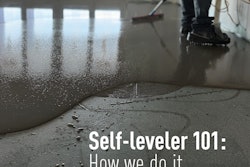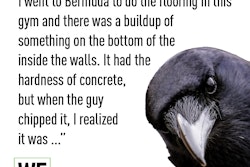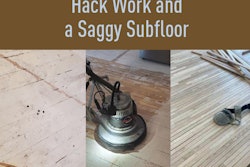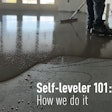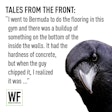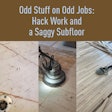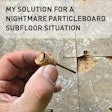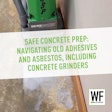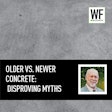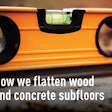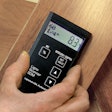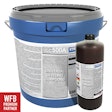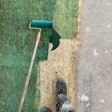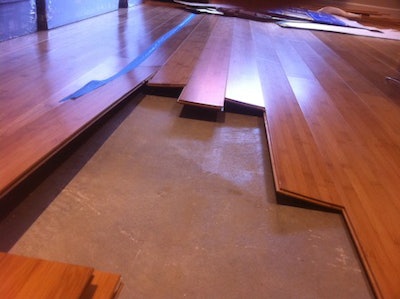

I remember an article I read about concrete and moisture years and years ago.
Kim Wahlgren wrote it and it was called Concrete Jungle or something like that. Nothing has really changed since then, right? Contractors still install floors over concrete without proper RH (relative humidity), moisture testing and without sealing the slabs (in the photo at right, it only took a couple weeks for the bamboo floor to buckle that high off the slab). Next time you have an installation over concrete I suggest you think about the following. By the way, it does not matter if you're installing engineered or solid, glue-down or floating or anything else.
When you look at a slab, you need to remember that it is poured directly on the ground. I'm talking about slabs on grade for this post. Yes, there may or may not be plastic underneath, and it does not matter. The slab holds and releases moisture all the time. You need to figure out the RH and moisture vapor emission rate (MVER) for two reasons:
1) Knowing those numbers will help you determine the course of action for controlling the vapor emission rate.
2) Your bottom needs covering (CYA): Just in case there is any issue with the floor down the road, you would have records showing your test results. I have sealed slabs that did not need sealing according to manufacturer and NWFA guidelines. Why? You guessed it: I love my bottom.
That's it. It all starts with the estimate. See Roy's recent article about why failures start at the point of sale. When I go in to do estimates, I tell my clients that sealing the slab is not a decision for them to make, it is mine. In fact, I never install anything over a slab unless I have RH, MVER results and a vapor barrier. I explain my clients that the slab may be dry NOW but this may change days, weeks or months later.
RELATED: Mitigate Moisture: Reduce Risk of Callbacks on Slab Jobs
I use the calcium chloride test for MVER, NOT a moisture meter. I also have a RH test kit that I absolutely love! Why? I get to use a hammer drill. ?
So, that's it. Know your test results and seal accordingly. Two of my favorite moisture barriers are a black 6-mil polyethylene and a two-part epoxy sealer. There are also barriers that are applied with a trowel, and that means I'm on my hand and knees. I'd rather be standing up rolling epoxy. There are other systems like the double tar and felt that work just fine but I find them to be too much work. They all work great if you follow the instructions. I will repeat this: They all work great IF you follow the instructions.
Once you're done sealing (keep your records and take photos) you are ready for the floor installation. Guess what? You don't need to think about this floor when it starts raining or at any point ever again. You just took the guesswork out of the equation. No more cupped or buckled floors because of moisture from the slab.










